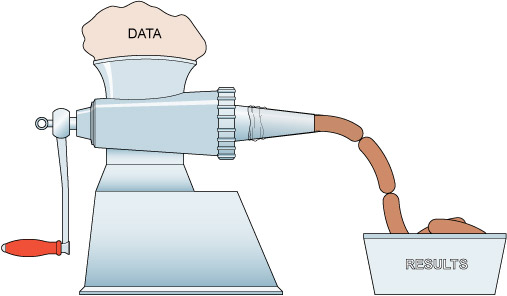2.2 Science is not like sausage-making
As you have seen, there are difficulties and, perhaps surprisingly, subjective judgements in deciding:
- whether a weather event is unexpected
- whether past and present climate distributions are different
- whether measured and simulated climate distributions are different.
You might be tempted to think of the scientific method and statistical analysis as objective recipes or methods to follow: put the data in the top, crank the handle and out fall neat ‘sausages’ of results (Figure 5). But it’s not as simple as that.

As you have seen, there may be more than one type of machine.
Statistical analysis is permeated with subjectivity because it involves making choices – assumptions, decisions and judgements – for which more than one option may be justifiable, even though the results may differ.
As such, these choices can be challenged – for positive or negative purposes.
